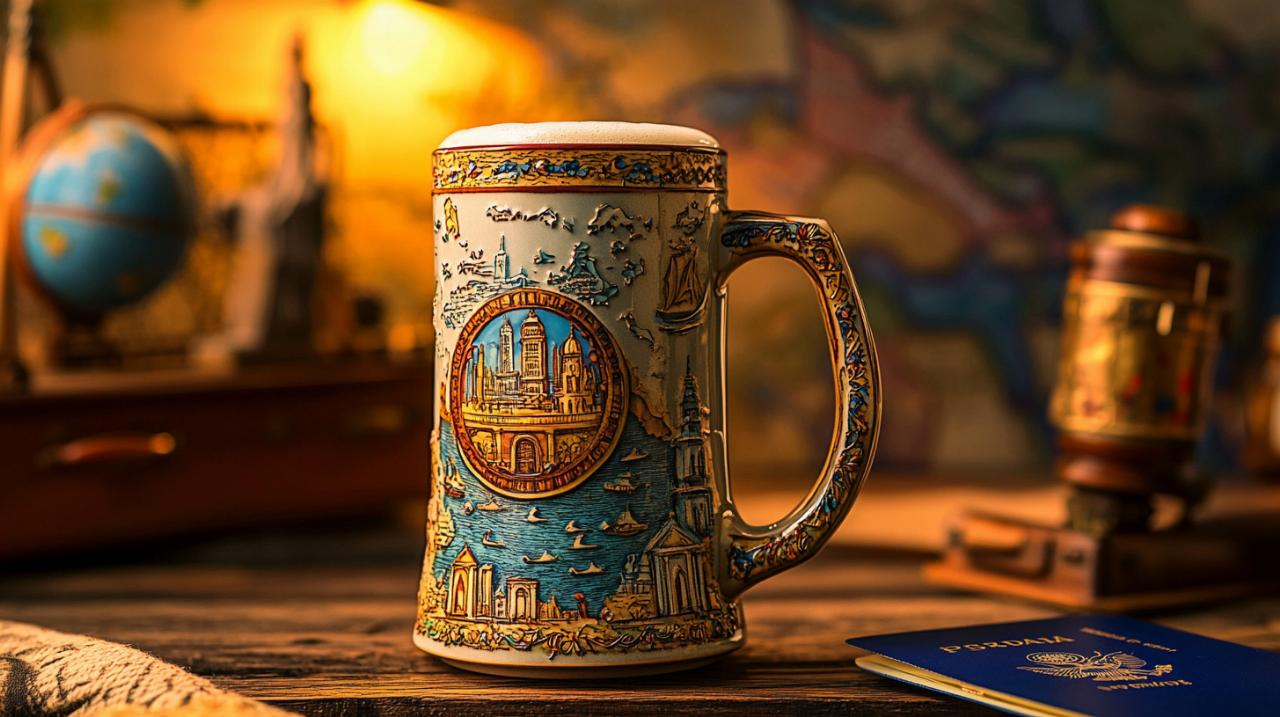Heat maps have emerged as powerful tools for online B2C stores seeking to understand customer behavior and optimize their websites for higher conversions. These visual representations use color-coding to highlight areas where users interact most frequently, giving store owners valuable insights into how visitors navigate their sites.
Understanding heat map technology
Heat map technology transforms complex user interaction data into intuitive visual representations that reveal patterns in visitor behavior. By tracking clicks, scrolls, and mouse movements, these tools create color-coded overlays that show exactly where users focus their attention on web pages, making it easier to identify both successful elements and potential friction points.
Types of heat maps for e-commerce analysis
E-commerce businesses can leverage several types of heat maps to gain comprehensive insights. Click maps display where visitors click most frequently, helping identify which calls-to-action and links receive attention. Scroll maps reveal how far down users navigate on pages, showing whether crucial content remains unseen. Move maps track mouse movements to indicate areas of interest. Many specialized tools like HotJar, Lucky Orange, and Punto Log offer these visualization capabilities specifically designed for tracking user engagement patterns across product pages, checkout processes, and landing pages.
Collecting and interpreting heat map data
The process of gathering heat map data involves placing tracking code on your website that monitors visitor interactions over a specified period. For meaningful results, collect data from high-traffic pages first, ensuring sufficient sample size for accurate analysis. When interpreting results, look for click clusters that indicate popular elements, scroll depths showing content visibility, and areas with minimal interaction that might need redesign. Mobile heat maps deserve special attention since mobile commerce represents over 30% of all e-commerce spending in the US and over 70% globally. Companies that optimize based on heat map insights often see significant improvements—for example, one agency decreased a client's mobile bounce rate by 8% and increased time on site by 84% by simplifying the mobile navigation menu.
Identifying critical conversion elements
Heat maps represent a powerful visual tool for B2C online stores seeking to optimize their conversion rates. These color-coded graphical representations reveal user behavior patterns across your website, showing exactly where visitors click, scroll, and focus their attention. By implementing heat map analysis, store owners can gain valuable insights into customer interactions that traditional analytics might miss, leading to data-driven optimization decisions that directly impact sales.
Ecommerce heat maps come in three primary varieties: click maps showing where users tap or click, scroll maps revealing how far down pages visitors travel, and move maps tracking cursor movements across the screen. When used strategically, these visualization tools complement traditional analytics by providing concrete visual evidence of user engagement patterns that can inform A/B testing and conversion rate optimization efforts.
Analyzing customer attention patterns
Heat map analysis reveals which elements on your pages capture customer attention and which go unnoticed. Research shows that understanding these attention patterns is crucial – visitors typically decide within seconds whether to engage with your site or bounce. By mapping these patterns, you can identify if your key CTAs are receiving adequate attention and optimize accordingly.
One revealing case study from Trampoline Plezier demonstrated a significant improvement in clickthrough rates from 22% to over 33% simply by adding a CTA button at the top of blog posts after heat map analysis revealed users weren't scrolling to existing conversion elements. For mobile optimization, which now accounts for over 30% of US ecommerce spending and 70% globally, heat maps have proven especially valuable. The Good agency used heat map data to simplify Swiss Gear's mobile menu, decreasing bounce rates by 8% while increasing time on site by 84%.
Discovering overlooked page elements
Heat maps excel at revealing overlooked opportunities within your store's pages. Scroll maps, for instance, can show exactly where visitor attention drops off, helping you identify critical content or offers that users never see. This insight allows you to reposition key elements for maximum visibility or redesign page layouts to guide visitors toward conversion points they previously missed.
Beyond identifying missed opportunities, heat maps can uncover unexpected user behavior patterns. The Turum-burum agency increased Intertop's ecommerce conversion rate by over 55% after heat map analysis revealed users struggling with product filtering – a pain point that wasn't apparent through standard analytics. Similarly, Epiphany agency boosted Time4sleep's mobile conversion rate by 63% after heat maps showed users attempting to filter products on mobile despite no filtering system being present. These real-world examples demonstrate how heat map analysis can transform overlooked page elements into powerful conversion drivers for B2C online stores.
Optimizing product pages with heat map insights
Heat maps are powerful visual tools that show exactly how users interact with your online store. By displaying data through color gradients, these maps reveal where customers click, scroll, and focus their attention. For B2C online stores, this visualization of user behavior creates opportunities to strategically enhance product pages and boost conversion rates.
Heat map analytics go beyond traditional metrics by showing precisely which elements capture attention and which are overlooked. With ecommerce conversion rates typically hovering around 2.5-3%, even small optimizations based on heat map insights can significantly impact your bottom line.
Repositioning key selling points based on user focus
Click maps reveal exactly where users are interacting with your product pages. When analyzing these patterns, you might discover that customers are clicking on certain areas more frequently or missing important calls-to-action (CTAs) entirely. This insight allows you to reposition key selling points to align with natural user behavior.
One telling case study shows how Trampoline Plezier increased their clickthrough rate from 22% to over 33% simply by adding a CTA button at the top of each page where heat maps showed high user engagement. For mobile optimization, this repositioning becomes even more critical since mobile ecommerce represents over 30% of all ecommerce spending in the US and over 70% globally.
Using heat maps to identify high-attention zones lets you place your most compelling product features, guarantees, or pricing information where users naturally look. This data-driven approach ensures that conversion-critical elements receive maximum visibility.
Enhancing product image and description placement
Scroll maps show exactly how far users travel down your product pages, revealing which content gets seen and which gets missed. This insight is invaluable for determining optimal placement of product images, descriptions, and technical details.
Heat map analysis often reveals that users spend more time examining certain product images or specific sections of product descriptions. By restructuring your pages to highlight these high-interest elements, you can create a more engaging user experience that drives conversions.
For instance, when Turum-burum agency analyzed heat maps for Intertop's ecommerce site, they discovered users struggling to find filtering options. After implementing design changes based on these insights, they increased conversion rates by over 55%.
Mobile heat maps provide separate critical data points, as browsing behaviors differ dramatically between desktop and mobile users. The Good agency used mobile heat map data to simplify Swiss Gear's mobile menu, decreasing bounce rate by 8% and increasing time on site by 84%. Similarly, Epiphany agency boosted Time4sleep's mobile conversion rate by 63% by adding a filtering system where heat maps showed users were searching.
By combining click maps, scroll maps, and move maps with traditional analytics, you gain a comprehensive view of user behavior that powers smart optimization decisions for your B2C product pages.
Refining checkout processes
 Checkout optimization stands as one of the most critical aspects of ecommerce conversion rate improvement. Heat maps provide invaluable visual data about how users interact with your checkout pages, revealing insights that traditional analytics might miss. By analyzing color-coded representations of user behavior, B2C online stores can identify exactly where customers hesitate, abandon carts, or struggle to complete purchases.
Checkout optimization stands as one of the most critical aspects of ecommerce conversion rate improvement. Heat maps provide invaluable visual data about how users interact with your checkout pages, revealing insights that traditional analytics might miss. By analyzing color-coded representations of user behavior, B2C online stores can identify exactly where customers hesitate, abandon carts, or struggle to complete purchases.
Heat maps visualize user behavior through various types including click maps, scroll maps, and move maps. For checkout processes specifically, these tools reveal friction points that might be causing your 2.5-3% conversion rate to fall below industry standards. When implemented correctly, the insights gained can help boost your conversion metrics well above the baseline 3% goal that online stores should aim for.
Eliminating friction points revealed by scroll maps
Scroll maps offer a powerful visualization of how far users move down your checkout pages, highlighting exactly where they abandon the process. The color gradient typically shows red areas receiving the most attention while blue sections get minimal visibility. This data proves especially valuable for multi-step checkout processes where users might drop off at specific stages.
When analyzing scroll map data, focus on identifying the exact points where the color changes from warm (red/orange) to cool (blue/green), signaling where users stop engaging. These transition points often indicate usability issues, confusing instructions, or unexpected elements that cause customers to leave. Mobile optimization becomes particularly crucial here, as over 70% of global ecommerce spending happens on mobile devices. By simplifying problematic sections based on scroll map insights, stores can achieve significant improvements – similar to how The Good agency decreased Swiss Gear's mobile bounce rate by 8% while increasing time on site by 84%.
Streamlining form fields based on user interaction data
Form fields represent major conversion killers when poorly implemented. Heat map analysis of checkout forms reveals which fields cause users to hesitate, make errors, or abandon the purchase process entirely. Click maps and move maps provide visibility into specific form elements that create friction, while session recordings can complement this data with detailed user journeys.
Data visualization through heat maps allows B2C stores to identify unnecessary form fields that can be eliminated, confusing labels that need clarification, or validation errors that frustrate users. Research shows that transparent communication is valued by 84% of clients as a key element in their purchasing decisions. By applying this principle to checkout form design, you can create a streamlined experience that maintains clarity while removing obstacles. Many successful ecommerce stores have reduced cart abandonment rates significantly by simplifying form interactions based on heat map data, ensuring that users complete purchases rather than abandoning at the final step.
Heat map tools like HotJar, Lucky Orange, and Mouseflow enable B2C online stores to continuously monitor customer interactions with checkout processes, allowing for ongoing optimization rather than one-time improvements. This iterative approach to conversion rate optimization ensures that checkout processes evolve with changing user expectations and behaviors, maintaining competitive conversion rates in an increasingly crowded ecommerce landscape.
Measuring success through heat map analytics
Heat maps have become essential tools for B2C online stores seeking to understand user behavior and improve conversion rates. These visual representations use color coding to display how users interact with websites, highlighting areas that attract attention and those that go unnoticed. By implementing heat map analytics, online retailers can gain valuable insights into customer journeys, identify friction points, and make data-driven decisions to optimize their digital storefronts.
Heat maps come in several varieties, each serving a specific purpose in analyzing user behavior. Click maps show exactly where users click on a page, scroll maps indicate how far down visitors travel on your site, and move maps track mouse movements to reveal user attention patterns. When combined with traditional analytics, these visualization tools provide a comprehensive view of how customers engage with your store.
Key metrics for tracking heat map-driven improvements
To measure the success of heat map implementations, B2C online stores must focus on specific metrics that indicate improvement in user experience and conversion rates. Conversion rate—the percentage of visitors who complete desired actions—stands as the primary metric, with an industry benchmark of 3% representing a solid baseline for online stores. Beyond this core metric, several complementary data points help paint a complete picture of heat map effectiveness.
Bounce rate reveals the percentage of visitors who leave after viewing just one page, while exit rate pinpoints where users most commonly abandon your site. Click-through rates (CTR) measure the effectiveness of calls-to-action, which can be directly optimized using click map data. Average session duration and page depth provide insights into engagement levels, while cart abandonment rate—a critical metric for ecommerce—can be reduced through strategic placement of elements identified through heat map analysis. Mobile conversion metrics deserve special attention, as mobile commerce now represents over 30% of ecommerce spending in the US and exceeds 70% globally.
Creating testing cycles for continuous optimization
Establishing a systematic approach to heat map testing creates a framework for ongoing site improvements. Begin by establishing clear goals for what you want to learn from your heat map data. Select appropriate heat map tools such as Lucky Orange, HotJar, Clicktale, or Mouseflow based on your specific needs. Deploy heat maps on high-traffic pages to gather statistically significant data quickly.
Create regular testing cycles that follow a defined process: collect heat map data, analyze user behavior patterns, develop hypotheses about potential improvements, implement changes, and measure results against your baseline metrics. This cycle works particularly well when integrated with A/B testing, where heat maps can explain why certain variations outperform others. For example, Trampoline Plezier increased their clickthrough rate from 22% to over 33% by adding a strategically placed CTA button identified through heat map analysis. Similarly, Swiss Gear decreased their mobile bounce rate by 8% and increased time on site by 84% after simplifying their mobile menu based on usability issues spotted in heat maps.
By establishing these testing cycles and focusing on key metrics, B2C online stores can transform heat map insights into tangible conversion improvements. Each optimization cycle builds upon previous learnings, creating a culture of data-driven decision making that continuously enhances the customer experience and drives business growth.





